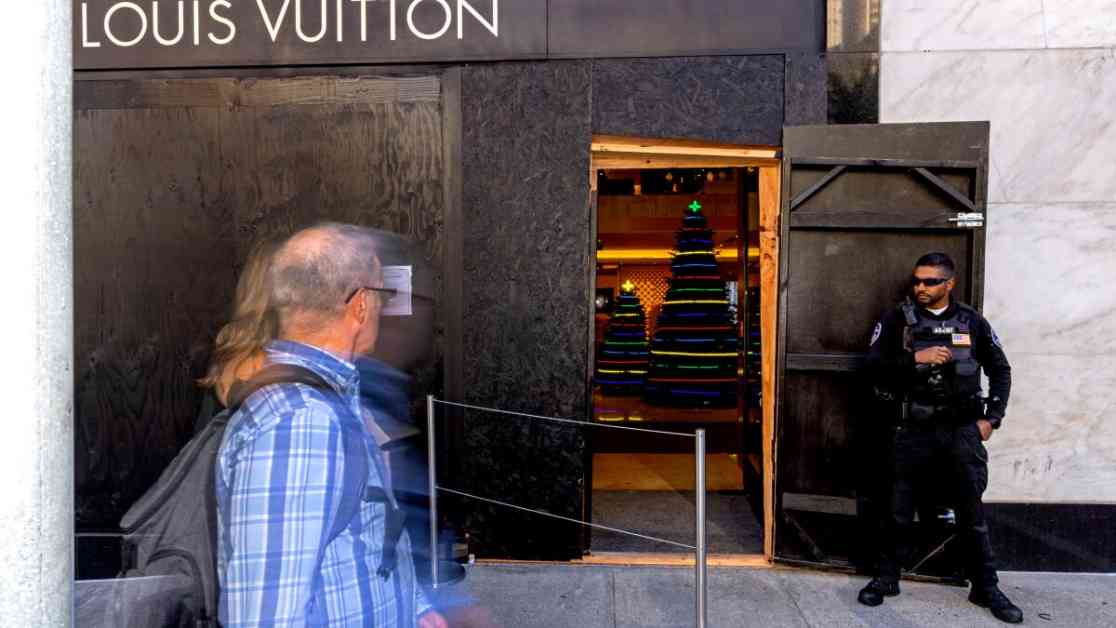Increase in Robberies or Shoplifting? Analyzing LAPD Statistics
At the Los Angeles Police Department’s weekly crime briefings this fall, its leaders tracked what seemed to be a troubling rise in robberies in police divisions such as Southwest and Rampart. The numbers showed an increase in stickups — if only on paper. Upon closer inspection, department records obtained by The Times indicate that most of the incidents may have started as shoplifting.
Under LAPD metrics, hundreds of thefts in which a suspect uses force or fear in the commission of a crime are counted as robberies — even if no weapons were used and no injuries occurred.
It’s a common scenario: A shoplifter, arms full of merchandise they didn’t pay for, makes a beeline for the exit, only to have their escape blocked by a security guard. A struggle ensues, and the thief knocks the guard over or merely threatens to do so, triggering a potential felony charge.
Through the first week of October, there were more than 1,200 such incidents across L.A., according to department statistics released through a public records request. This accounted for roughly 1 in 8 robberies, down slightly compared with the same period in 2023.
Some officials wonder whether the data reflect a shift by business owners toward more aggressive loss prevention strategies, leading to more in-store confrontations with security guards.
Estes Robberies and Legal Implications
Shoplifting incidents that escalate are sometimes referred to as Estes robberies, after a legal standard that dates to the early 1980s, when a man named Curtis Estes tried to walk out of a Sears store in Vallejo wearing a down vest and corduroy coat he hadn’t paid for. When confronted by an armed security guard in the parking lot, Estes pulled a knife out and threatened to kill the guard, before eventually surrendering.
Estes was convicted of felony robbery, which was upheld under appeal with the court ruling that “a store employee may be a victim of a robbery even though he does not own the property taken.”
In the decades since, law enforcement has used the Estes robbery standard to charge shoplifters with robbery even if they didn’t have weapons. Although some incidents can be downgraded by prosecutors to misdemeanors or dismissed due to lack of evidence, the LAPD counts each case it refers as a robbery.
Strategies for Preventing In-Store Confrontations
Stores also can face liability if someone is injured or killed, and the risk of incurring hefty legal costs might not justify trying to wrestle a thief to the ground. There have been numerous instances of confrontations that turned deadly, including a high-profile case in 2023 in San Francisco in which a security guard at a local Walgreens shot and killed an unarmed man he suspected of shoplifting.
Loss prevention specialists and security guards are increasingly being trained to “observe, identify, and document the situation as best as possible and not to necessarily apprehend,” said Geoff Kohl Sr., director of marketing for the Security Industry Assn., a trade group in Maryland.
Challenges in Reporting and Data Reliability
The classification of some minor thefts as Estes robberies raises questions about the reliability of the LAPD’s crime figures, which have come under scrutiny in years past. Inside the numbers-obsessed department, crime counts still dictate staffing decisions and serve as a benchmark for supervisors, who are still largely judged by their successes and failures in lowering serious crimes — such as homicides, robberies and burglaries — in their divisions.
Jeff Asher, a crime analyst and consultant based in New Orleans, said that outside of homicides and auto theft, most crime categories are notoriously unreliable and prone to underreporting.
Retail theft, in particular, is not well tracked, “which makes it very difficult to say what is an increase and what is an increase in the change in reporting.”
That said, he added, the most reliable data available show that, with few exceptions, shoplifting is lower today than it was before the outbreak of the pandemic. “Overall in Los Angeles, you’re seeing a decline in both theft and robberies,” he said.
In conclusion, the classification of shoplifting incidents as robberies poses significant legal and social implications, impacting both businesses and individuals involved. The reliability of crime data and the potential consequences of felony charges for shoplifting incidents remain key areas of concern for law enforcement and community stakeholders in Los Angeles.

